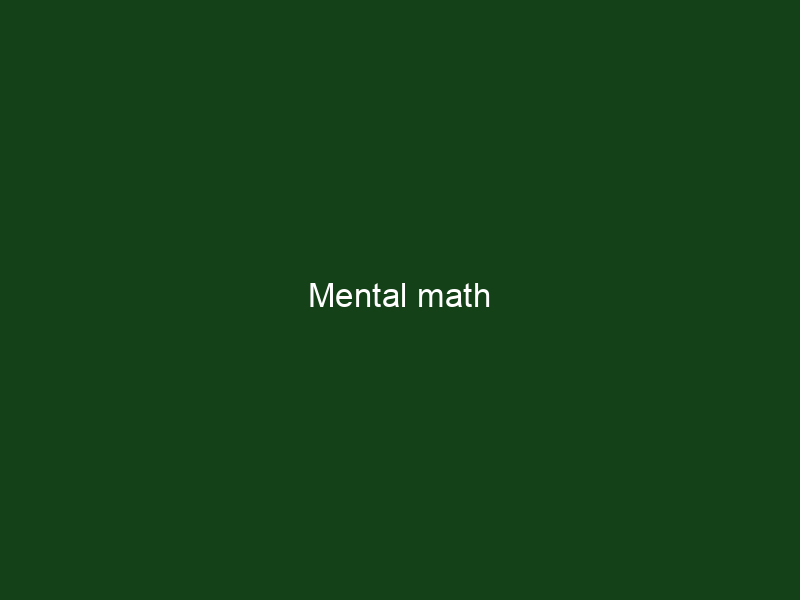We have powerful computers, why do we still do mental math? Part of it has to do with building intuition and checking for errors, part of it has to do with the speed of decision making, some of it is a great brain practice and yet a bit of it is a magic. Whatever the reason is, we are taught to do mental math at school, see for example this booklet. Japanese students have a very different strategy and a competition very similar to our spelling bee. Like any discussion, it is quite often that we start with a
Learning basic math is like magic tricks. It is cool and has WOW effect. Read about Trachtenberg System (also here. For example “Rule: to multiply by 6: Add half of the neighbor to each digit, then, if the current digit is odd, add 5.”. To perform the operation you need to remember the original number, the result, the current digit, its neighbor and a carry – about 5 objects, and operate on them in your head at great speed. This puts a huge pressure on your working memory and speed of access to it – as you pull digits from the original number, process them and push the digits into the result. This working memory exercise will definitely improve the way you access your working memory and keep your mind sharp. And you do not need ANYTHING to do it but your head! That’s a good way to practice while waiting for something.
There are many books on mental math. Most of them include a large variety of tricks. Write “quora math tricks” in google and you will get cool pages like this one or this one. Bill Handley release many books on learning mental calculations and teaching them to kids. If you want to learn various tricks of mental math, you could try reading them. The basic idea: once we can play with numbers and enjoy them we build mathematical intuition and develop love to math. The emphasis here is on the joy factor: once we learn the tricks, we can amaze people around us and will love to learn more. Some tricks are very complex, so they challange our capabilities and other tricks are very simple, so we must succeed.
Mental math champions have a different methodology. It involves complex visualization of abacus or a similar device. The technique starts from making computations with physical device for several months and then switching to visualization of the device in one’s head. Some people can even visualize a slide ruler to improve computation of logarithms and trigonometric functions. This level of visualization is not readily achievable and requires a lot of practice.
And then there are individuals who percieve math on a different level. Probably it cannot be taught. For example read this story. Some argue that Srinivasa Ramanujan had a rare form of synaestesia that allowed him to see numbers. While we discussed various strategies of getting number-color synesthesia, some people can actually see fractals. Here is another story of such person. It is probably possible to unlock the fractal synestesia via some sort of training, we just have not dicovered it yet.
Mental math is an interesting way to train your working memory, visualization and math skills using no tools anyone can see. Full disclosure: none of us has actually mastered mental math. We do encourage you to try for yourself and tell us what you think.

Get 4 Free Sample Chapters of the Key To Study Book
Get access to advanced training, and a selection of free apps to train your reading speed and visual memory

